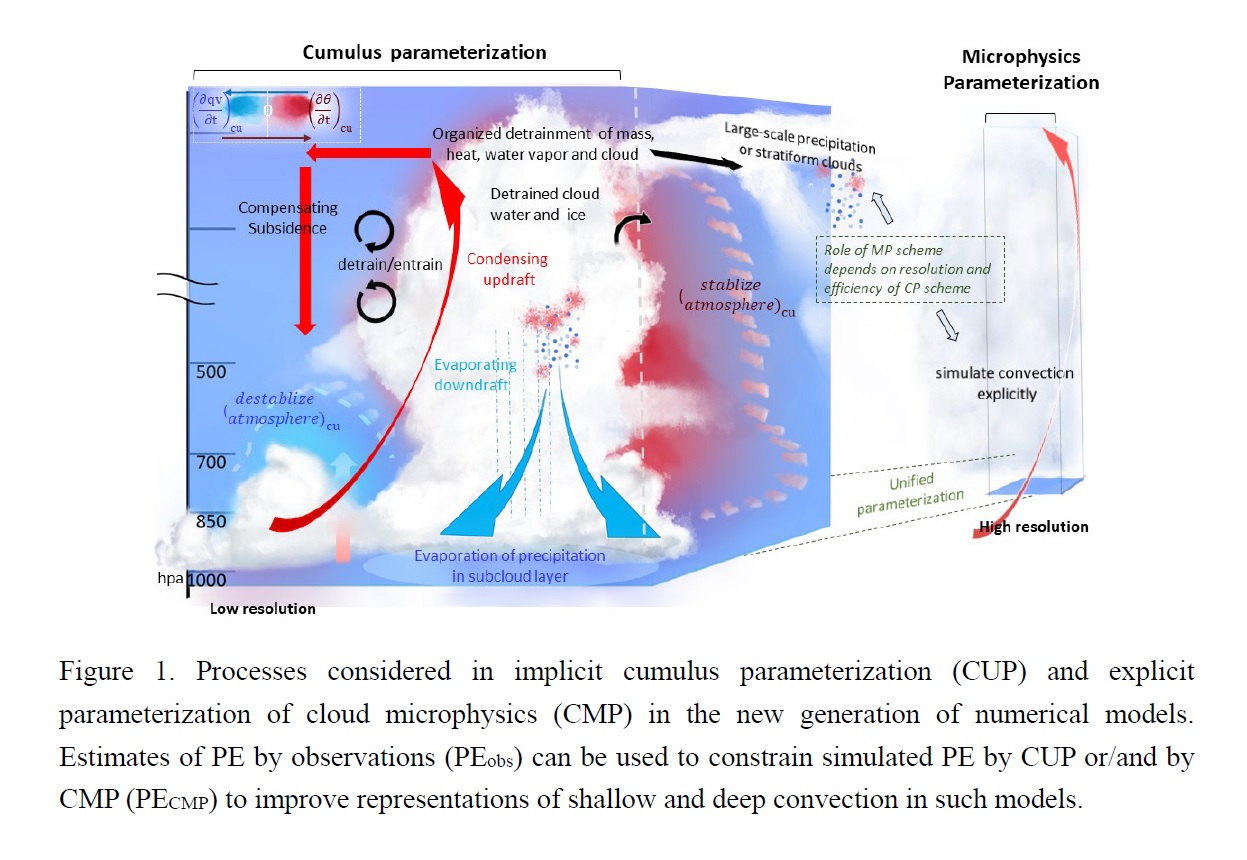Graphical Abstract
Sui, C.-H., M. Satoh, and K. Suzuki, 2020: Precipitation efficiency and its role in cloud-radiative feedbacks to climate variability. J. Meteor. Soc. Japan, 98, 261-282.
https://doi.org/10.2151/jmsj.2020-024
Graphical Abstract
Plain Language Summary: This is a review for studies of cloud and climate from the perspective of Precipitation Efficiency (PE) that is a measure of the portion of total condensation rate in a convective system that is converted into precipitation flux at the surface. PEs have been defined and estimated from microscopic and macroscopic perspectives. We review these studies for various types and systems of convection using observational and modeling approaches. We also review studies about key cloud physical processes in shallow and deep convection and cloud-radiation changes with climate warming in view of PE.
Highlights:
- PEobs : thunderstorms in North America (0.1~0.6); tropical and subtropical squall lines (0.45–0.57); tropical convective and stratiform convection (~0.7, ~2.0); trade wind clouds (0.2–0.3);
- PECMP: tropical cumulus (0.2–0.8); cumulus congestus (0.3–0.5), tropical and mid-latitude squall systems (0.2–0.5), hurricanes/typhoons (0.6–0.75 over ocean, 0.95 over steep mountain), mixed-phase mid-latitude convection (~0.2).
- PE is an important physical constraint in parameterized cloud physics.
- Roles of PE on high- and low-clouds and their changes are discussed.
- PE is useful in understanding cloud-precipitation changes in studies of climate projection.







